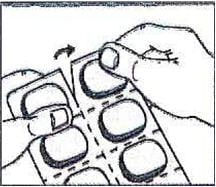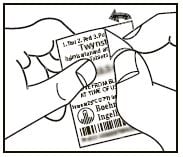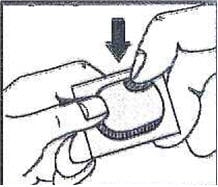What is Twynsta?
Twynsta is a prescription medicine that contains telmisartan and amlodipine.
Twynsta tablets may be used to treat high blood pressure (hypertension):
- when one of these medicines (or a similar one) is not enough to lower your high blood pressure
- as the first medicine to lower your high blood pressure if your doctor decides you are likely to need more than one medicine
It is not known if Twynsta is safe and effective in children.
What is high blood pressure (hypertension)?
Blood pressure is the force in your blood vessels when your heart beats and when your heart rests. You have high blood pressure when the force is too much. Twynsta tablets can help your blood vessels relax so your blood pressure is lower. Medicines that lower your blood pressure lower your chance of having a stroke or heart attack.
High blood pressure makes the heart work harder to pump blood throughout the body and causes damage to the blood vessels. If high blood pressure is not treated, it can lead to stroke, heart attack, heart failure, kidney failure, and vision problems.
What is the most important information I should know about Twynsta?
Twynsta can cause harm or death to an unborn baby. Talk to your doctor about other ways to lower your blood pressure if you plan to become pregnant. If you get pregnant while taking Twynsta, tell your doctor right away.
Who should not take Twynsta?
You should not take Twynsta tablets if you are allergic (hypersensitive) to the active ingredients (telmisartan or amlodipine) or any of the other ingredients listed at the end of this guide.
For patients with diabetes, if you are taking Twynsta you should not take aliskiren.
What should I tell my healthcare provider before taking Twynsta?
Before you take Twynsta tablets, tell your doctor if you:
- are pregnant or are planning to become pregnant. See “What is the most important information I should know about Twynsta tablets?”
- are breast-feeding or plan to breast-feed. Twynsta can pass into your breast milk and may harm your baby. You and your doctor should decide if you will take Twynsta tablets or breast-feed. You should not do both. Talk with your doctor about the best way to feed your baby if you take Twynsta tablets.
- have liver problems
- have kidney problems
- have heart problems
- have any other medical conditions
Tell your doctor about all the medicines you take, including prescription and nonprescription medicines, vitamins and herbal supplements.
For patients with diabetes, if you are taking Twynsta you should not take aliskiren.
Twynsta may affect the way other medicines work, and other medicines may affect how Twynsta works. Especially tell your doctor if you take:
- aliskiren
- digoxin (Lanoxin)
- lithium (Lithobid, lithium carbonate, lithium citrate)
- aspirin or other non-steroidal anti-inflammatory drugs (NSAIDs)
- other medicines that may be used to treat high blood pressure or a heart problem
- simvastatin (Zocor, Vytorin)
- water pills (diuretics)
Know the medicines you take. Keep a list of them and show it to your doctor or pharmacist when you get a new medicine.
How should I take Twynsta?
- Take Twynsta tablets exactly as your doctor tells you to take it.
- Your doctor will tell you how much Twynsta to take and when to take it. Your doctor may change your dose if needed.
- Take Twynsta one time each day at the same time.
- Take Twynsta tablets with or without food.
- If you miss a dose, take it as soon as you remember. If it is close to your next dose, do not take the missed dose. Take the next dose at your regular time.
- If you take too much Twynsta, call your doctor or go to the nearest hospital emergency room right away.
- Read the “How to Open the Blister” at the end of this leaflet before you use Twynsta. Talk with your doctor if you do not understand the instructions.
What are the possible side effects of Twynsta?
Twynsta tablets may cause serious side effects, including:
- Injury or death to your unborn baby. See “What is the most important information I should know about Twynsta tablets?”
- Low blood pressure (hypotension) is most likely to happen if you also:
- take water pills (diuretics)
- are on a low-salt diet
- get dialysis treatments
- have heart problems
- get sick with vomiting or diarrhea
If you feel faint or dizzy, lie down and call your doctor right away. - Kidney problems. Kidney problems may get worse if you already have kidney disease. You may have changes in your kidney test results, and you may need a lower dose of Twynsta tablets. Call your doctor if you get:
- swelling in your feet, ankles, or hands
- unexplained weight gain
- Heart problems or heart attack. Heart problems may get worse in people that already have heart disease. This may happen when you start Twynsta tablets or when there is an increase in your dose of Twynsta. Get emergency help if you get worse chest pain or chest pain that does not go away.
- High potassium in the blood (hyperkalemia). Your doctor may check your potassium levels as needed.
- Muscle rigidity, tremor and/or abnormal muscle movement.
- Rare, serious allergic reactions may happen. Tell your doctor right away if you get any of these symptoms:
- swelling of face, tongue, throat
- difficulty breathing
- skin rash
The most common side effects of Twynsta tablets include:
- swelling in your hands, ankles, or feet
- feeling like your heart is pounding or racing
- flushing or sudden redness of the face and neck
- dizziness
- back pain
- feeling tired or sleepy
- abdominal pain, nausea, or diarrhea
- low blood pressure or a sudden drop in blood pressure with fainting
These are not all the possible side effects of Twynsta tablets. Tell your doctor if you have any side effect that bothers you or that does not go away.
Call your doctor for medical advice about side effects. You may report side effects to FDA at 1-800-FDA-1088.
General information about the safe and effective use of Twynsta
Medicines are sometimes prescribed for purposes other than those listed in a Patient Information leaflet. Do not use Twynsta tablets for a condition for which it was not prescribed. Do not give Twynsta tablets to other people, even if they have the same symptoms that you have. It may harm them.
This Patient Information leaflet summarizes the most important information about Twynsta tablets. If you would like more information, talk with your doctor. You can ask your pharmacist or doctor for information about Twynsta tablets that is written for health professionals.
For current prescribing information, call Boehringer Ingelheim Pharmaceuticals, Inc. at 1-800-542-6257, or (TTY) 1-800-459-9906.
How should I store Twynsta?
- Store Twynsta tablets at room temperature 68° to 77°F (20° to 25°C).
- Do not remove Twynsta tablets from blisters until right before you take them.
- Keep Twynsta tablets out of the light and away from moisture.
Keep Twynsta tablets and all medicines out of the reach of children.
What are the ingredients in Twynsta?
Active ingredients: telmisartan and amlodipine besylate
Inactive ingredients: sodium hydroxide, povidone, meglumine, sorbitol, magnesium stearate, microcrystalline cellulose, pregelatinized starch, corn starch, colloidal silicon dioxide, ferric oxide black, ferric oxide yellow and FD&C blue #1.
Instructions for use for Twynsta
How to open the blister:
1. Tear (You may also use scissors to tear the blister apart)

2. Peel (Peel off the paper layer from the aluminum foil)

3. Push (Push the tablet through the foil)






